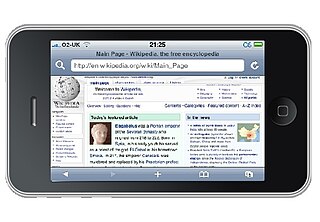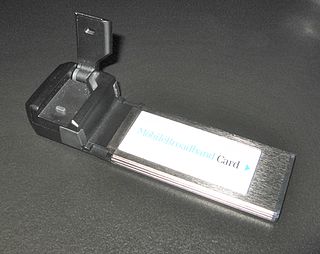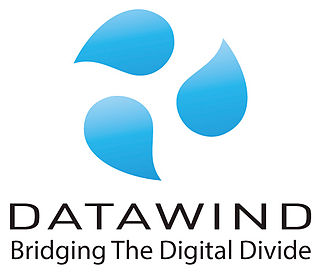This article needs to be updated.(January 2017) |

The mobile web comprises mobile browser-based World Wide Web services accessed from handheld mobile devices, such as smartphones or feature phones, through a mobile or other wireless network.
This article needs to be updated.(January 2017) |

The mobile web comprises mobile browser-based World Wide Web services accessed from handheld mobile devices, such as smartphones or feature phones, through a mobile or other wireless network.
Traditionally, the World Wide Web has been accessed via fixed-line services on laptops and desktop computers. However, the web is now more accessible by portable and wireless devices. Early 2010 ITU (International Telecommunication Union) report said that with current growth rates, web access by people on the go – via laptops and smart mobile devices – was likely to exceed web access from desktop computers within the following five years. [1] In January 2014, mobile internet use exceeded desktop use in the United States. [2] The shift to mobile Web access has accelerated since 2007 with the rise of larger multitouch smartphones, and since 2010 with the rise of multitouch tablet computers. Both platforms provide better Internet access, screens, and mobile browsers, or application-based user Web experiences than previous generations of mobile devices. Web designers may work separately on such pages, or pages may be automatically converted, as in Mobile Wikipedia. Faster speeds, smaller, feature-rich devices, and a multitude of applications continue to drive explosive growth for mobile internet traffic. The 2017 Virtual Network Index (VNI) report produced by Cisco Systems forecasts that by 2021, there will be 5.5 billion global mobile users (up from 4.9 billion in 2016). [3] Additionally, the same 2017 VNI report forecasts that average access speeds will increase by roughly three times from 6.8 Mbit/s to 20 Mbit/s in that same period with video comprising the bulk of the traffic (78%).
According to BuzzCity, the mobile internet increased by 30% from Q1 to Q2 2011. [4] In July 2012, approximately 10.5% of all web traffic occurred through mobile devices (up from 4% in December 2010). [5]
The distinction between mobile web applications and native applications is anticipated to become increasingly blurred, as mobile browsers gain direct access to the hardware of mobile devices (including accelerometers and GPS chips), and the speed and abilities of browser-based applications improve. Persistent storage and access to sophisticated user interface graphics functions may further reduce the need for the development of platform-specific native applications.
The mobile web has also been called Web 3.0, drawing parallels to the changes users were experiencing as Web 2.0 websites proliferated. [6] [7] [8]

The mobile web was first popularized by the Silicon Valley company, Unwired Planet. [9] [ failed verification ] In 1997, Unwired Planet, Nokia, Ericsson, and Motorola started the WAP Forum to create and harmonize the standards to ease the transition to bandwidth networks and small display devices. The WAP standard was built on a three-layer, middleware architecture that fueled the early growth of the mobile web. It was made virtually irrelevant after the development and adoption of faster networks, larger displays, and advanced smartphones based on Apple's iOS and Google's Android software.
Mobile Internet refers to Internet access and mainly usage of Internet using a cellular telephone service provider or mobile wireless network. This wireless access can easily change to use a different wireless Internet (radio) tower as a mobile device user moves across the service area. Cellular base stations that connect through the telephone system are more expensive to provide compared to a wireless base station that connects directly to the network of an internet service provider. A mobile broadband modem may "tethers" the smartphone to one or more devices to provide access to the Internet via the protocols that cellular telephone service providers offer.
The Mobile Web Initiative (MWI) was set up by the W3C to develop the best practices and technologies relevant to the mobile web. The goal of the initiative is to make browsing the web from mobile devices more reliable and accessible. The main aim is to evolve standards of data formats from Internet providers that are tailored to the specifications of particular mobile devices. The W3C has published guidelines for mobile content, and aimed to address the problem of device diversity by establishing a technology to support a repository of device descriptions.
W3C developed a validating scheme to assess the readiness of content for the mobile web, through its mobileOK Scheme, which aims to help content developers to determine if their content is web-ready. [10] The W3C guidelines and mobileOK approach have faced criticism.[ citation needed ] mTLD, the registry for .mobi, released a free testing tool called the MobiReady Report (see mobiForge) to analyze the mobile readiness of website.
This section needs additional citations for verification .(December 2023) |
Access to the mobile web was first commercially offered in 1996, in Finland, on the Nokia 9000 Communicator phone via the Sonera and Radiolinja networks. The first commercial launch of a mobile-specific browser-based web service was in 1999 in Japan when i-mode was launched by NTT DoCoMo.

The mobile web primarily utilizes lightweight pages like this one written in Extensible Hypertext Markup Language (XHTML) or Wireless Markup Language (WML) to deliver content to mobile devices. Many new mobile browsers are moving beyond these limits by supporting a wider range of Web formats, including variants of HTML commonly found on the desktop web.

At one time, half the world had mobile phones. [11] The articles in 2007-2008 were slightly misleading because the real story at the time was that the number of mobile phone subscriptions had reached half the population of the world. In reality, many people have more than one subscription. For example, in Hong Kong, Italy and Ukraine, the mobile phone penetration rate had passed 140% by 2009 . In 2009, the number of unique users of mobile phones had reached half the population of the planet when the ITU reported that the subscriber number was to reach 4.6 billion users which means 3.8 billion activated mobile phones in use, and 3.4 billion unique users of mobile phones.[ clarification needed ] Mobile Internet data connections are following the growth of mobile phone connections, albeit at a lower rate. In 2009 Yankee Group reported that 29% of all mobile phone users globally were accessing browser-based internet content on their phones. According to the BBC, in 2020 there were over 5 billion mobile phone users in the world. [12] According to Statista there were 1.57 billion smartphone owners in 2014 and 2.32 billion in 2017. [13]
Many users in Europe and the United States are already users of the fixed internet when they first try the same experience on a mobile phone. Meanwhile, in other parts of the world, such as India, their first usage of the internet is on a mobile phone. Growth is fastest in parts of the world where the personal computer (PC) is not the first user experience of the internet. India, South Africa, Indonesia, and Saudi Arabia are seeing the fastest growth in mobile internet usage.[ as of? ] To a great extent, this is due to the rapid adoption of mobile phones themselves. For example, Morgan Stanley reports that the highest mobile phone adoption growth in 2006 was in Pakistan and India. Mobile internet has also been adopted in West Africa, [14] and China had 155 million mobile internet users as of June 2009. [15] [ irrelevant citation ]
The .mobi sponsored top-level domain was launched specifically for the mobile Internet by a consortium of companies including Google, Microsoft, Nokia, Samsung, and Vodafone. By forcing sites to comply with mobile web standards, .mobi tries to ensure visitors a consistent and optimized experience on their mobile device. However, this domain has been criticized by several big names, including Tim Berners-Lee of the W3C, who said that providing different content to different devices "breaks the Web in a fundamental way". [16]
In the fall of 2015, Google announced it would be rolling out an open source initiative called "Accelerated Mobile Pages" or AMP. The goal of this project is to improve the speed and performance of content-rich pages which include video, animations, and graphics. Since the majority of the population now consumes the web through tablets and smartphones, having web pages that are optimized for these products is the primary need to AMP. [17] [18]
The three main types of AMP are AMP HTML, AMP JS, and Google AMP Cache. [19]
As of February 2018, Google requires the canonical page content to match the content on accelerated mobile pages.[ citation needed ]

Mobile web access may suffer from interoperability and usability problems. Interoperability issues stem from the platform fragmentation of mobile devices, mobile operating systems, and browsers. Usability problems are centered on the small physical size of the mobile phone form factors, which limit display resolution and user input). Limitations vary, depending on the device, and newer smartphones overcome some of these restrictions, but problems which may be encountered include:

A website is a collection of web pages and related content that is identified by a common domain name and published on at least one web server. Websites are typically dedicated to a particular topic or purpose, such as news, education, commerce, entertainment, or social media. Hyperlinking between web pages guides the navigation of the site, which often starts with a home page. The most-visited sites are Google, YouTube, and Facebook.

A mobile browser is a web browser designed for use on a mobile device such as a mobile phone, PDA, smartphone, or tablet. Mobile browsers are optimized to display web content most effectively on small screens on portable devices. Some mobile browsers, especially older versions, are designed to be small and efficient to accommodate the low memory capacity and low bandwidth of certain wireless handheld devices. Traditional smaller feature phones use stripped-down mobile web browsers; however, most current smartphones have full-fledged browsers that can handle the latest web technologies, such as CSS 3, JavaScript, and Ajax.

Mobile computing is human–computer interaction in which a computer is expected to be transported during normal usage and allow for transmission of data, which can include voice and video transmissions. Mobile computing involves mobile communication, mobile hardware, and mobile software. Communication issues include ad hoc networks and infrastructure networks as well as communication properties, protocols, data formats, and concrete technologies. Hardware includes mobile devices or device components. Mobile software deals with the characteristics and requirements of mobile applications.
A Rich Internet Application is a web application that has many of the characteristics of desktop application software. The concept is closely related to a single-page application, and may allow the user interactive features such as drag and drop, background menu, WYSIWYG editing, etc. The concept was first introduced in 2002 by Macromedia to describe Macromedia Flash MX product. Throughout the 2000-s, the term was generalized to describe browser-based applications developed with other competing browser plugin technologies including Java applets, Microsoft Silverlight.

A mobile phone feature is a capability, service, or application that a mobile phone offers to its users. Mobile phones are often referred to as feature phones, and offer basic telephony. Handsets with more advanced computing ability through the use of native code try to differentiate their own products by implementing additional functions to make them more attractive to consumers. This has led to great innovation in mobile phone development over the past 20 years.

The World Wide Web is a global information medium that users can access via computers connected to the Internet. The term is often mistakenly used as a synonym for the Internet, but the Web is a service that operates over the Internet, just as email and Usenet do. The history of the Internet and the history of hypertext date back significantly further than that of the World Wide Web.

Mobile broadband is the marketing term for wireless Internet access via mobile networks. Access to the network can be made through a portable modem, wireless modem, or a tablet/smartphone or other mobile device. The first wireless Internet access became available in 1991 as part of the second generation (2G) of mobile phone technology. Higher speeds became available in 2001 and 2006 as part of the third (3G) and fourth (4G) generations. In 2011, 90% of the world's population lived in areas with 2G coverage, while 45% lived in areas with 2G and 3G coverage. Mobile broadband uses the spectrum of 225 MHz to 3700 MHz.
Wireless Application Protocol (WAP) is a technical standard for accessing information over a mobile wireless network. A WAP browser is a web browser for mobile devices such as mobile phones that use the protocol. Introduced in 1999, WAP achieved some popularity in the early 2000s, but by the 2010s it had been largely superseded by more modern standards. Modern phones have proper Web browsers, so they do not need WAP markup for compatibility, and therefore, most are no longer able to render and display pages written in WML, WAP's markup language.
ThunderHawk is a discontinued web browser from Bitstream available for a full range of operating systems in high end and mass-market mobile phones and personal digital assistants. It is basically meant for mobile operators and original equipment manufacturers and not meant to download for normal users.
Mobile web analytics studies the behaviour of mobile website users in a similar way to traditional web analytics. In a commercial context, mobile web analytics refers to the data collected from the users who access a website from a mobile phone. It helps to determine which aspects of the website work best for mobile traffic and which mobile marketing campaigns work best for the business, including mobile advertising, mobile search marketing, text campaigns, and desktop promotion of mobile sites and services.
A software widget is a relatively simple and easy-to-use software application or component made for one or more different software platforms.
The W3C Geolocation API is an effort by the World Wide Web Consortium (W3C) to standardize an interface to retrieve the geographical location information for a client-side device. It defines a set of objects, ECMAScript standard compliant, that executing in the client application give the client's device location through the consulting of Location Information Servers, which are transparent for the application programming interface (API). The most common sources of location information are IP address, Wi-Fi and Bluetooth MAC address, radio-frequency identification (RFID), Wi-Fi connection location, or device Global Positioning System (GPS) and GSM/CDMA cell IDs. The location is returned with a given accuracy depending on the best location information source available.

Mobile technology is the technology used for cellular communication. Mobile technology has evolved rapidly over the past few years. Since the start of this millennium, a standard mobile device has gone from being no more than a simple two-way pager to being a mobile phone, GPS navigation device, an embedded web browser and instant messaging client, and a handheld gaming console. Many experts believe that the future of computer technology rests in mobile computing with wireless networking. Mobile computing by way of tablet computers is becoming more popular. Tablets are available on the 3G and 4G networks.
Mobile Business Intelligence is defined as “Mobile BI is a system comprising both technical and organizational elements that present historical and/or real-time information to its users for analysis on mobile devices such as smartphones and tablets, to enable effective decision-making and management support, for the overall purpose of increasing firm performance.”. Business intelligence (BI) refers to computer-based techniques used in spotting, digging-out, and analyzing business data, such as sales revenue by products and/or departments or associated costs and incomes.
A mobile application or app is a computer program or software application designed to run on a mobile device such as a phone, tablet, or watch. Mobile applications often stand in contrast to desktop applications which are designed to run on desktop computers, and web applications which run in mobile web browsers rather than directly on the mobile device.

Jeotex, Inc. was a Canadian company that specializing in the development and manufacturing of low-cost tablet computers and smartphones. Founded in Montreal, Quebec, the company aimed to produce tablets primarily for markets in India, Nigeria, the United Kingdom, Canada, and the United States. Joetex gained recognition for creating the "world's cheapest tablet" the Aakash tablet computer, priced at US$37.99 per unit. The Aakash was developed for India's Ministry for Human Resource Development (MHRD).

Responsive web design (RWD) or responsive design is an approach to web design that aims to make web pages render well on a variety of devices and window or screen sizes from minimum to maximum display size to ensure usability and satisfaction.

Screen-Smart Device Interaction (SSI) is fairly new technology developed as a sub-branch of Digital Signage.
Puffin Browser is a remote browser developed by CloudMosa, an American mobile technology company founded by Shioupyn Shen.
{{cite web}}: CS1 maint: archived copy as title (link)Dividing the Web into information destined for different devices, or different classes of user, or different classes of information, breaks the Web in a fundamental way.